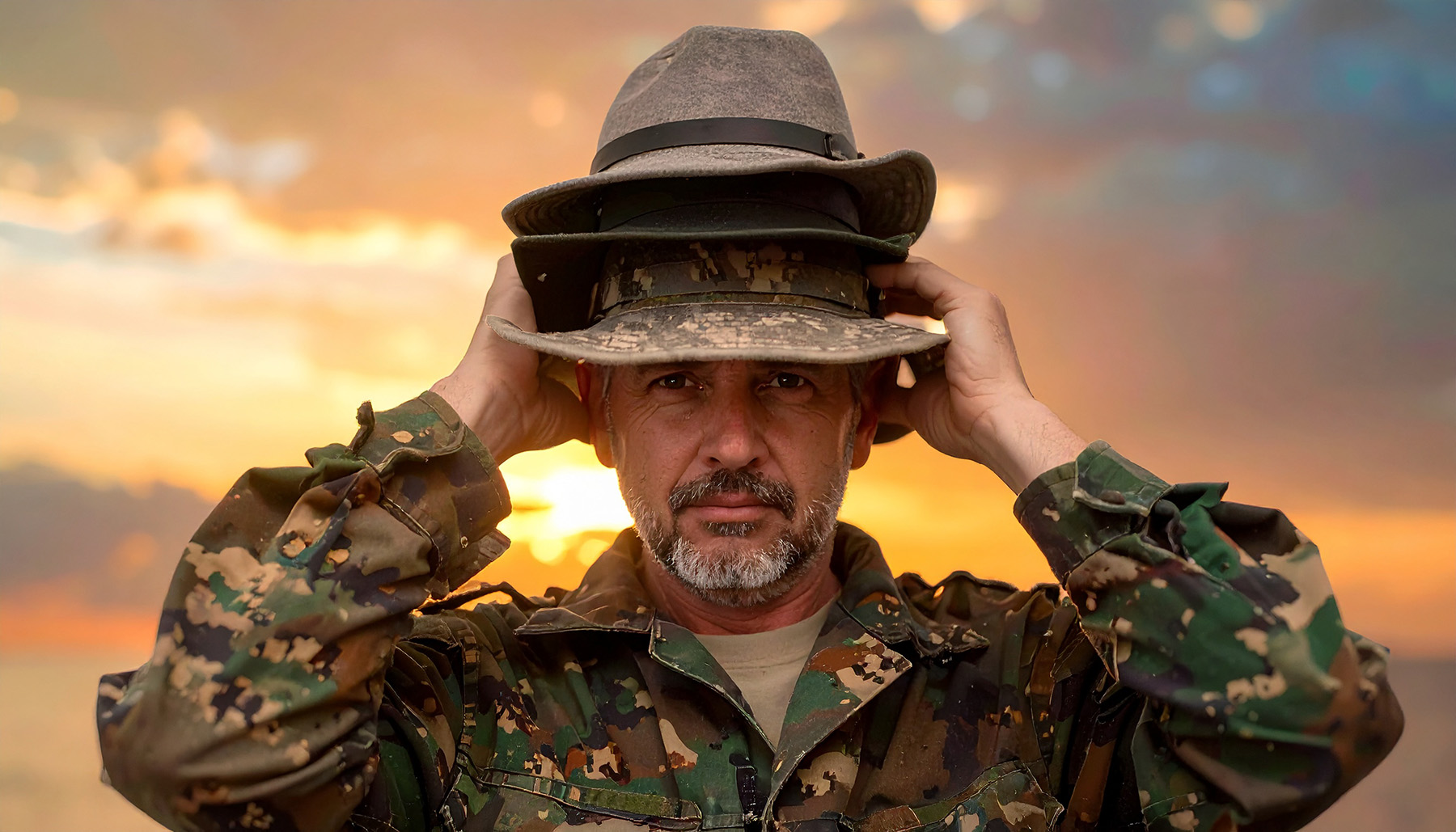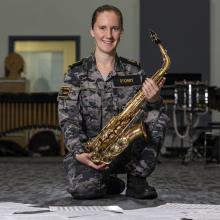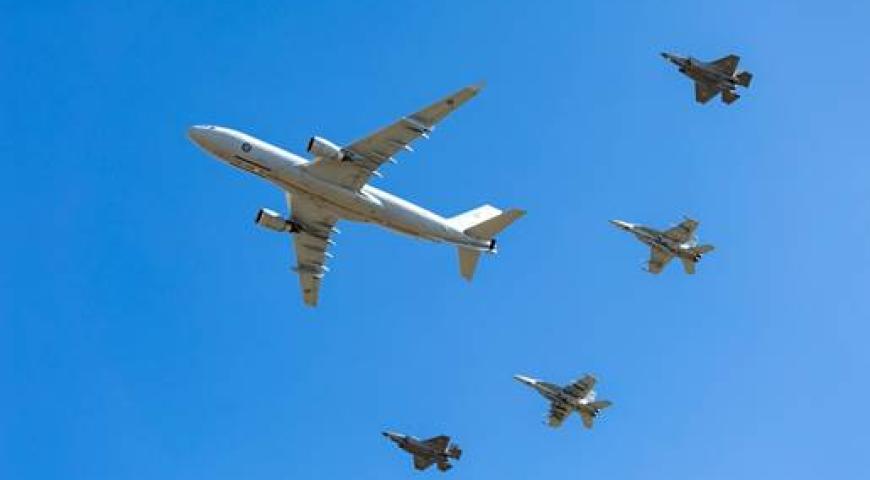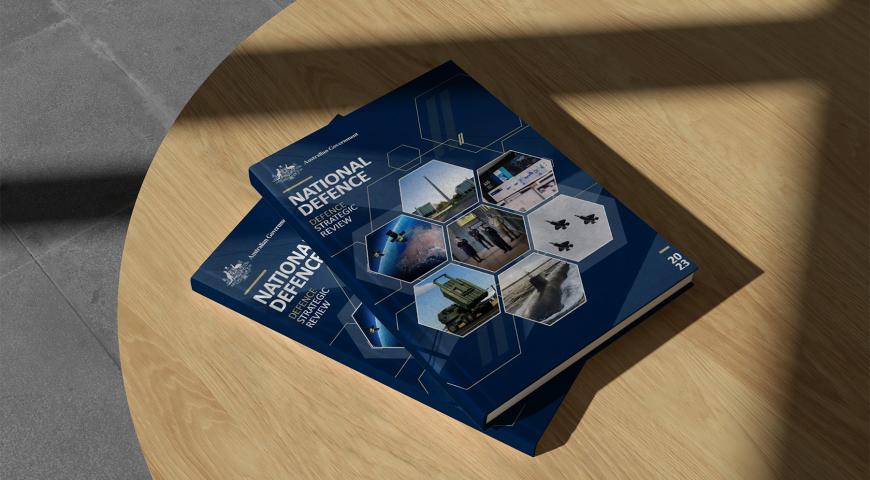Much of the ADF’s ethical framework evolved in an era when its role was to provide kinetic force in conventional state-based warfare. While this is still part of the ADF’s purpose, the current geopolitical context, contemporary nature of conflict, and other pressures have expanded and diversified the role of the modern ADF.
Role
Historical ethical frameworks may have served the ADF well when its role was predominantly to provide kinetic force in conventional conflicts, but they would be inadequate to navigate current and future expectations of Australia’s armed forces. Reed et al state that, ‘in today’s combat environment, military personnel are more likely to be faced with ethical issues because their operations involve counterinsurgency, nation-building, and asymmetric warfare.’[1] Beyond kinetic environments, geopolitical and technological shifts are enabling new intensities and methods of grey zone activity. The ADF has also been called upon to assist the civic community and to provide support for humanitarian aid and disaster relief, both domestically and abroad, raising discussion about its role in that sphere. This has extended to support in operations intercepting asylum seekers, a politically contentious and ethically fraught issue.[2] The frameworks needed to navigate these various roles require different nuances and approaches from those designed for conventional state-on-state conflict.
Terminology around new and emerging military concepts in this space is evolving and definitions can be hazy. In this essay, the following language and conceptual structure will be used:
Operations Other than War – This will refer to any roles the ADF undertakes that are clearly distinct from the spectrum of strategic competition.[3] As the lines between war and grey zone activity blur, this category does not include non-war strategic competition activities. It does include:
- Defence Assistance to the Civic Community
- Humanitarian Aid and Disaster Relief
- Border protection
Unconventional Conflict[4] – This will refer to all strategic conflict (including, but not exclusively, war) including grey zone activity and asymmetric warfare. Other terms that are often used in similar ways in other texts are ‘unconventional warfare’ and ‘irregular warfare’.
Grey Zone – This will refer specifically to intensities of conflict that may be, or definitely fall, below the threshold to be called ‘war’. This does involve unconventional conflict methods such as economic coercion and cognitive warfare but here is defined by intensity not tactics. Various intensities of interaction that would fall under this umbrella are:
- Competition eg technological or political
- Coercion eg economic
- Open conflict below the level of warfare
Asymmetric Warfare – This will refer to conflicts where participants are significantly different in status (eg state and non-state), structure, and/or tactics. It includes:
- Counterinsurgency
- State vs non-state warfare
- Counterterrorism
Unconventional Conflict Methods – This sphere has significant interaction with technological developments. It includes actions that fall (sometimes significantly) short of the threshold of ‘war’ or even ‘violence’ but that nonetheless are part of the ecosystem of interest advancement that includes war, coercion and diplomacy. It includes:
- Political warfare
- Psychological warfare
- Cognitive warfare
- Information warfare
- Economic coercion
- Soft power
- Cyber warfare
Unconventional conflict is on the rise. Through the 20tth century, civilian deaths went from being less than 20 per cent of the death toll in war to circa 75 per cent.[5] Dowdall and Smith note that, ‘it is increasingly common for military practitioners to spend the majority of their time operating amongst the civilian population.’[6] These contexts can present challenges to the ethical authorities embedded in the rank structure, with most counterinsurgency engagements depending heavily on the decisions of non-commissioned officers (NCOs) rather than commissioned officers.[7] In some of the more nuanced kinetic conflict environments, particularly counterinsurgency operations, IHL and its underlying ethical principles can be difficult to accurately map onto a muddied situation. In particular, IHL demands the principle of Distinction, that is between combatants and non-combatants, and certain actions such as the use of lethal force are applicable and ethically acceptable depending on that status. In counterinsurgency operations, this Distinction is complicated by both ‘civilian belligerents’[8] who move along a spectrum between conventional combatant and uninvolved innocent, and by the difficulty of distinguishing someone’s status when opponents and civilians are intermingled.
Criminal justice ethical frameworks can provide some useful insight here.[9] In domestic policing, the focus is on ‘suspects’ rather than the military model of ‘enemies’, and the level of force proportionally acceptable is lessened. Instead of the military lens on conflict or the police lens on peacekeeping, Dowdall and Smith propose that the counterinsurgency environment be considered as an ‘interim environment’ between conventional warfare and police operations. In such a ‘war amongst the people’[10] a focus on restraint is paramount. The role of military personnel can fluctuate from one task to the next between the essentially peaceful all the way to conventional combat, and interact with a spectrum of combatants, ‘civilian belligerents’, and innocents. In such an environment, the concept of a ‘continuum of force’, inherently Proportionate in nature, can act as a pragmatic framework.[11]
This ‘continuum of force’ approach can call into question previously accepted restrictions around the type of weapons condoned for military use and the related need to never target non-combatants. Several non-lethal weapons are prohibited under IHL because of their indiscriminate nature or a desire to avoid ‘unnecessary suffering’. Tear gas, for example, is prohibited under the Chemical Weapons Convention except for ‘law enforcement including domestic riot control purposes.[12] Likewise, the use in warfare of bullets that ‘expand or flatten easily in the human body’ is considered prohibited under customary international law,[13] but they are used worldwide by police officers because they limit the risk of conventional bullets passing through the intended target and hitting bystanders.[14] The use of these IHL prohibited weapons, rather than IHL permitted lethal force, might actually reduce harm in asymmetric and counterinsurgency operations, a situation Dr Stephen Coleman sums up as, ‘It could be argued that international law simply has not been able to keep up with the changing nature of warfare and that in modern asymmetric conflicts it is actually more appropriate for military personnel to utilise non-lethal weapons than traditional lethal ones.’[15]
If using non-lethal weapons, there may also be an ethical argument for the deliberate targeting of non-combatants.[16] Weapons such as Active Denial Technology (directed energy designed to cause pain but not injury[17]) or anaesthetic gas that renders people temporarily unconscious, could be used to clear an area of civilians, or to incapacitate everyone in an area in order to carry out more precise attacks. However, such operations would violate the prohibition on deliberate targeting of non-combatants or failing to Discriminate between combatants and non-combatants. A far more destructive approach of applying explosive force targeting a military object may well be legal (subject to Proportionality tests) even if there were resultant non-combatant casualties.[18]
In addition to kinetic operations that do not meet the definitions of conventional war, non-kinetic grey zone activity is posing increasing challenges. Chief of Defence Force General Angus Campbell has stated, ‘the use of coercive statecraft, lawfare and influence operations in the grey-zone between peace and war undermine the traditional understandings of the international rules based order and test the thresholds for conventional military response.’[19] This paradigm necessitates nuance in the use of force.[20] As well as being an ADF-specific concern, as geopolitical competition increasingly blurs military objectives with economic, diplomatic, and informational ones there is a greater need for coordination and collaboration between different arms of national power. This has been termed ‘integrated campaigning’[21] and an ethical framework will need to be able to function with that model of operations.
Various theories have been proposed for the grey zone of military activity. ADF-P-0 ME clarifies, ‘The ADF’s ethical approach to the use of force other than war reflects the same principles traditionally applied to conventional war’ and supports jus ad vim as a component of Just War theory. Lieutenant Colonel William Soucie writes of a ‘competition-continuum’ with ‘peace’ at one end and ‘war’ at the other and no clear dividing line between to two.[22] Several non-Western countries have longstanding theories of statecraft that conceptualise the grey zone in more nuanced ways than the peace/war dichotomy typical of traditional Western military thinking.[23] Notably, Chinese and Russian military strategy have well-developed frameworks of grey zone activity.[24]
In particular, the use of cyberwarfare in the grey zone has many similar complications to unconventional kinetic conflict in terms of Proportionality and Distinction.[25] In addition, competition within the spheres of information, narrative control, and public opinion can be especially challenging for democratic countries with core values of freedom of speech and an unfettered forum for public debate. States with more authoritarian systems of governance can have the advantage in this space,[26] and the ethical challenge for Australia and the ADF is how to neutralise this advantage while upholding key principles of democracy and personal freedoms. Carl Miller talks about the ‘intrinsic value’ of information and truth as a core concept in an open democracy with intellectual rigour. He argues that if information becomes ‘instrumentalised’ as a weapon of military objective, it fundamentally degrades that concept and leads not only to a lack of trust and goodwill in engaging with information but also to a ‘moral rot’ of society.[27] This argument has parallels with the imperative to protect cultural property in IHL.
In recent years, the ADF’s role has also expanded significantly into operations that are not of a conflict or competition nature. In particular, it has been frequently called on to assist the wider community in Defence Assistance to the Civic Community operations including assisting with the Covid-19 pandemic.[28] It has also responded to natural disasters both domestically and abroad through Humanitarian Aid and Disaster Relief. With increasingly severe climate change, it is expected that need for climate-related disaster response will increase both within Australia and internationally.[29] Corporal Riley has written on the challenges of utilising ADF support for tasks tangential to its main role both in terms of mission clarity, and in terms of the different ethical challenges that members will face dealing with confronting scenarios on home soil, including those caused or exacerbated by political failings.[30]
Of particular note is the use of the ADF in border operations. In 2001, the ADF was used by then Prime Minister John Howard to deter asylum seekers arriving by boat.[31] This policy was controversial both then as now.[32] The ADF continues to be used in border patrol operations through Operation Resolute[33]. As Major Gareth Rice points out, ‘Such use of a nation’s military to potentially deny a human right poses notable ethical challenges in regard to the use of force.’[34] This can increase the risk of moral injury, with one veteran describing a sense of guilt and anger after rescued asylum seekers were confined in offshore detention:[35] ‘To know that these [people] were going to refugee camps as a political power move sort of felt like a kick in the guts too.’[36] Following his service in border patrol operations, this veteran struggled with suicidal thoughts and mental health conditions including PTSD.[37] The ADF-P-0 ME addresses the issue of ADF members objecting to orders on an ethical basis with reference to the primacy of the rule of law, clarifying the necessity of armed forces in a democracy to defer to elected authority.[38]
In summary, the nature of conflict and statecraft has changed and continues to change from the traditional state-on-state kinetic warfare that previously defined the ADF’s role. An increase in nuanced asymmetrical environments such as counterinsurgency has challenged existing modes of military thinking and operating. Activity in the grey zone between peace and war, fuelled by technological advancements, has highlighted the necessity for more flexible and continuum-based approaches to the use of force. Increased reliance on the ADF to provide assistance in operations other than war, such as community tasks, humanitarian support, and border patrol, have raised questions about the function of the ADF in such situations and how ethical operation in those roles may differ from traditional military frameworks.
Next in Navigating New Ethical Frontiers: Part 4, Culture
1 K Robinson et al., The relationship of risk to rules, values, virtues, and moral complexity: What we can learn from the moral struggles of military leaders.
2 G Rice, Border protection and human rights: The Australian Defence Force's challenge, https://search.informit.org/doi/10.3316/INFORMIT.677761401362353, Human Rights Defender, Vol. 28, No. 2, 2019, accessed November 2023.
3 There can be an element of strategy involved in operations other than war in demonstrating Australia’s resources and capability and willingness to assist our neighbours, but here that is considered incidental to the principle goal of such operations.
4 The word ‘conflict’ rather than ‘warfare’ is chosen here in acknowledgement of the smooth scale between competitive statecraft and kinetic violence. Many frameworks draw a line in the sand beyond which an ethic distinct to warfighting applies; however, in the current environment such a line may be at best arbitrary and at worst fictitious.
5 DW Lovell, ‘Educating for Ethical Behaviour? Preparing Military Leaders for Ethical Challenges’, in I Primoratz and DW Lovell, Protecting Civilians During Violent Conflict: Theoretical and Practical Issues for the 21st Century, 2012, Routledge.
6 J Dowdall and MLR Smith, Counter-insurgency in the grey: The ethical challenge for military conduct, https://www.tandfonline.com/doi/abs/10.1080/13523261003640850, Contemporary Security Policy, Volume 31, 2010.
7 K Atwell and A Milburn (Hosts) (12 February 2021) Pacific gambit: The role of irregular warfare in Australia's great strategic shift, https://mwi.westpoint.edu/pacific-gambit-the-role-of-irregular-warfare-in-australias-great-strategic-shift/, [podcast], Irregular Warfare Podcast, Modern War Institute at West Point, accessed 23 November 2023; This issue will be discussed in more depth in the chapter on Culture.
8 J Dowdall and MLR Smith, Counter-insurgency in the grey: The ethical challenge for military conduct, quoting a term used by Albert Janin
9 J Dowdall and MLR Smith, Counter-insurgency in the grey: The ethical challenge for military conduct.
10 A concept explored in depth by General Sir Rupert Smith.
11 J Dowdall and MLR Smith, Counter-insurgency in the grey: The ethical challenge for military conduct.
12 International Committee of the Red Cross, Chemical and biological weapons, https://www.icrc.org/en/document/chemical-biological-weapons, International Committee of the Red Cross, 8 April 2013, accessed 9 November 2023.
13 S Coleman, New Technologies and the Law of Armed Conflict. p33
14 S Coleman, New Technologies and the Law of Armed Conflict. p34
15 S Coleman, New Technologies and the Law of Armed Conflict. p34
16 S Coleman, New Technologies and the Law of Armed Conflict. p37
17 Joint Intermediate Force Capabilities Office, Active Denial Technology, https://jnlwp.defense.gov/Press-Room/Fact-Sheets/Article-View-Fact-sheets/Article/577989/active-denial-technology/, U.S. Department of Defense Non-Lethal Weapons Program, 11 May 2020, accessed 23 November 2023.
18 S Coleman, New Technologies and the Law of Armed Conflict. p37
19 A Campbell, An Address by General Angus Campbell, Chief of the Defence Force, https://www.lowyinstitute.org/publications/address-general-angus-campbell-chief-defence-force, Lowy Institute, 12 April 2023, accessed 4 November 2023.
20 A Campbell, An Address by General Angus Campbell, Chief of the Defence Force.
21 A Campbell, An Address by General Angus Campbell, Chief of the Defence Force.
22 WR Soucie, Peekaboo with Mars or: How I learned to love Jus ad Vim and address the ethical implications to the changing character of war, https://theforge.defence.gov.au/article/peekaboo-mars-or-how-i-learned-love-jus-ad-vim-and-address-ethical-implications-changing-character-war, The Forge, n.d., accessed 12 November 2023.
23 A Campbell, Transcript of General Angus J Campbell’s address to the 2023 ASPI Conference - Disruption and Deterrence.
24 R Babbage, Winning Without Fighting: Chinese and Russian Political Warfare Campaigns and How the West Can Prevail, https://csbaonline.org/research/publications/winning-without-fighting-chinese-and-russian-political-warfare-campaigns-and-how-the-west-can-prevail, Centre for Strategic and Budgetary Assessments, 24 July 2019, accessed 24 November 2023.
25 The cyber domain is discussed in more detail in the chapter on Technology.
26 B Jebb and A Darnley-Stuart (20 October 2023) ‘Subversion: The strategic weaponisation of narratives’, https://mwi.westpoint.edu/irregular-warfare-podcast-the-strategic-weaponization-of-narratives/, [podcast], Irregular War Podcast, Modern War Institute at West Point, accessed 23 October 2023.
27 S Fegan (Host) (17 August 2022) ‘What are we getting wrong about online manipulation?’, https://www.lowyinstitute.org/publications/rules-based-audio-what-are-we-getting-wrong-about-online-manipulation, [podcast], Rules Based Audio, Lowy Institute, accessed 21 November 2023.
28 Australian Government, National Defence: Defence Strategic Review 2023, https://www.defence.gov.au/about/reviews-inquiries/defence-strategic-review, Australian Government Defence, 2023, accessed 28 October 2023, p41.
29 Australian Government, National Defence: Defence Strategic Review 2023, p41.
30 C Riley, Is emotionally unintelligent leadership the enemy within?, https://theforge.defence.gov.au/article/first-place-category-1-essays, The Forge, 2023, accessed 20 November 2023.
31 G Rice, Border protection and human rights: The Australian Defence Force's challenge.
32 C Rawlinson, Turn back boats policy doomed: former ADF chief, https://www.abc.net.au/news/2013-09-18/barrie-on-asylum-seeker-boat-policy-dound-to-fail/4965582, ABC, 18 September 2013, accessed 23 November 2023.
33 Australian Government Defence, Operation Resolute, https://www.defence.gov.au/defence-activities/operations/resolute, Defence, n.d., accessed 28 October 2023.
34 G Rice, Border protection and human rights: The Australian Defence Force's challenge.
35 D Hurst Royal commissioner accuses ADF of ‘too much talk and not enough action’ on veteran suicide, https://www.theguardian.com/australia-news/2023/sep/13/royal-commissioner-accuses-adf-of-too-much-talk-and-not-enough-action-on-veteran-suicide, The Guardian, 13 September 2023, accessed 23 November 2023; Australian Associated Press, Seaman who retrieved dead bodies of asylum seekers still tormented by ‘dangerous’ mission, https://www.theguardian.com/world/2021/dec/09/seaman-who-retrieved-dead-bodies-of-asylum-seekers-still-tormented-by-dangerous-mission, The Guardian, 9 December 2021, accessed 23 November 2023.
36 J Ross and A Brewster, 'A doll in the water' actually a baby as navy sailor tells of distress at sea to Royal Commission into Defence and Veteran Suicide, https://www.abc.net.au/news/2021-12-09/qld-royal-commission-into-defence-and-veteran-suicide-navy/100687314, ABC, 9 December 2021, accessed 23 November 2023.
37 Australian Associated Press, Seaman who retrieved dead bodies of asylum seekers still tormented by ‘dangerous’ mission.
38 Australian Defence Force, ADF Philosophical Doctrine - Military Ethics, p12.
Social Mastery
Navigating New Ethical Frontiers - Part 3 - Role © 2025 by . This work is licensed under CC BY-NC-ND![]()
![]()
![]()
![]()
Please let us know if you have discovered an issue with the content on this page.
Comments
Start the conversation by sharing your thoughts! Please login to comment. If you don't yet have an account registration is quick and easy.





